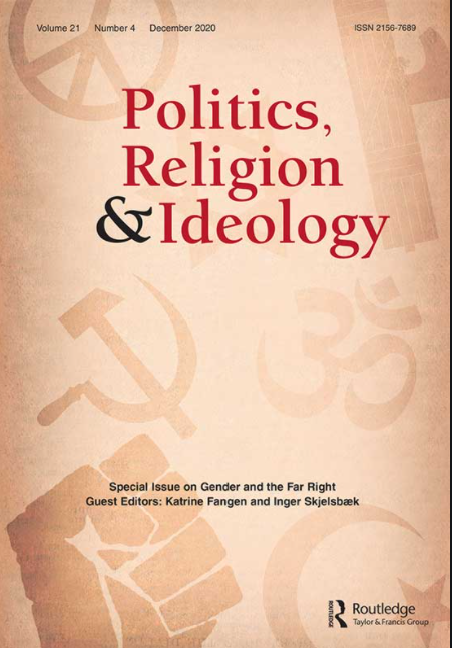
The latest issue of Politics, Religion & Ideology focuses on gender and the far right, and has been edited by Inger Skjelsbæk (UIO/ PRIO) and Katrine Fangen (ISS, UiO). The special issue also includes an article by Inger Skjelsbæk, Julie Marie Hansen (PRIO/UiO), and Jenny Lorentzen (PRIO/Lund University) entitled "Hopes and Misguided Expectations: How Policy Documents Frame Gender in Efforts at Preventing Terrorism and Violent Extremism".
Gender and the Far Right
The upsurge of studies on gender and the far right has come as a response to several factors. First, while there have been female leaders in far-right political parties for some time in Europe, and these number have increased. As a result, the gendered dynamics of leadership and power structures become more visible, spurring a renewed focus on gender. Second, far-right mobilization is often anchored in an opposition to pro-gender norms and support for traditional gender roles, a phenomenon that has become more accentuated in recent years. The emergence and rhetorical use of the term ‘gender ideologies’ functions as a unifying element for particular forms of extremist mobilization, serving to unite them against other forms of more progressive, and global, gendered changes characterized by gender equality and tolerance for sexual diversity.
Read the special issue on "Gender and the Far Right" in Politics, Religion & Ideology here.
Hopes and misguided expectations: How policy documents frame gender in efforts at preventing terrorism and violent extremism
In recent years, increased attention has been given to the role of women in preventing and countering violent extremism (CVE). This potential role of women has been included in the United Nations Security Council’s follow-up resolutions to Resolution 1325 on Women, Peace and Security, as well as in the CVE policies of other intergovernmental organizations and governments. This policy development has been met with both support and criticism. In this article, we critically analyse CVE policies to better understand how the intersection between gender and violent extremism is conceptualized in them. We analyse how gendered identities and roles are framed in policy documents on preventing and countering violent extremism. Through the analyses, we discuss how CVE policy documents define the spheres of gendered influence in efforts to prevent and counter violent extremism.





